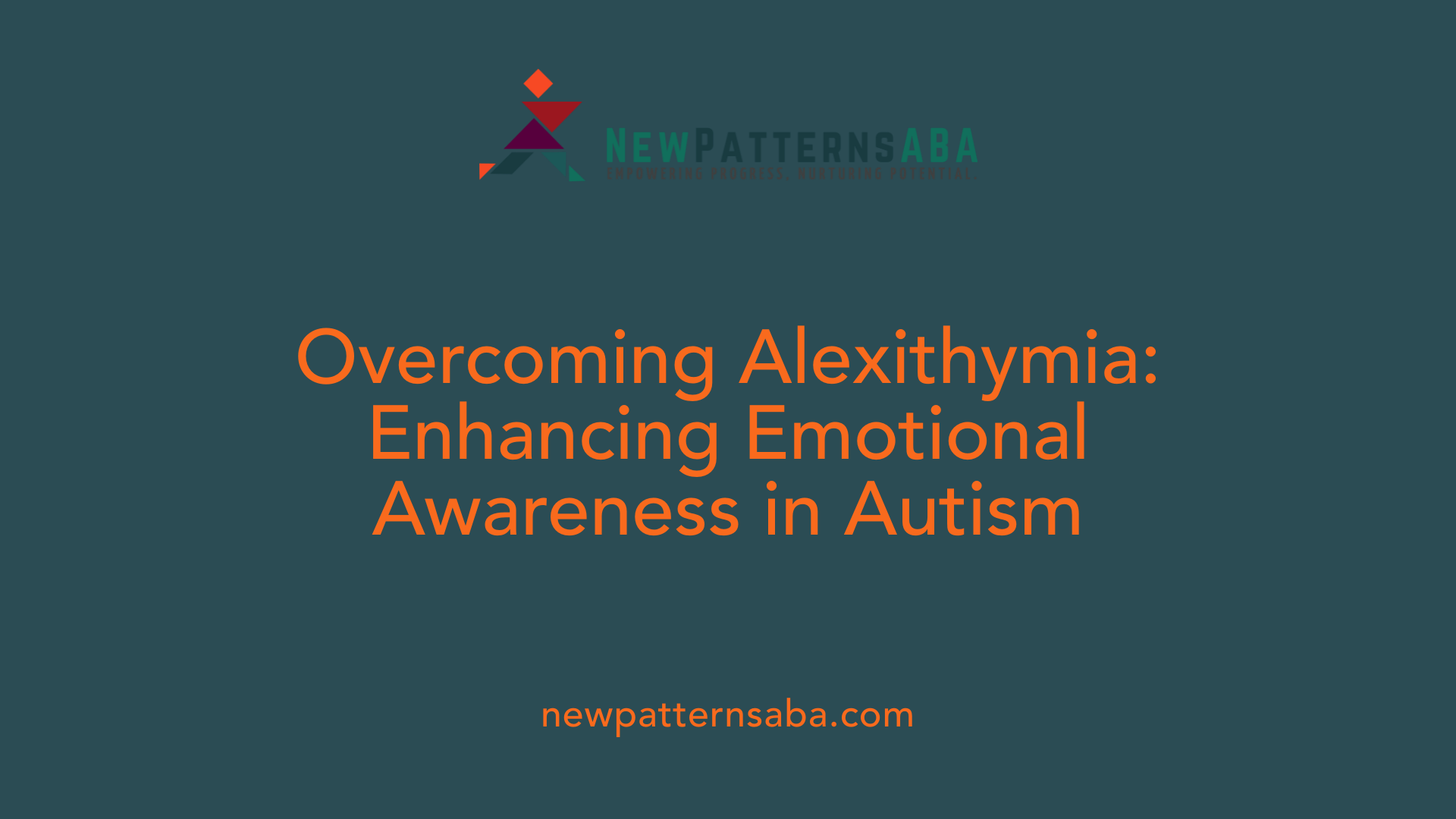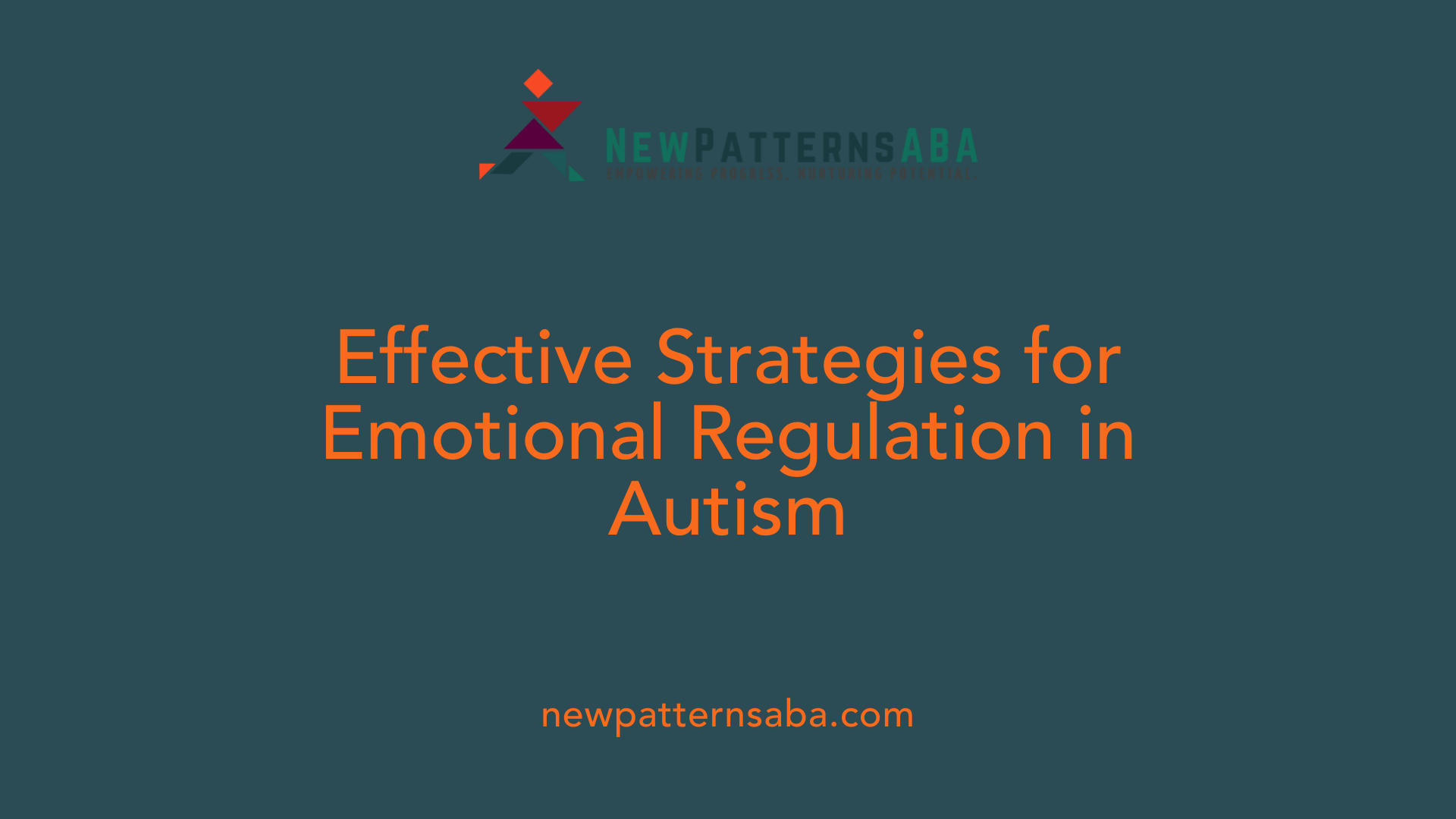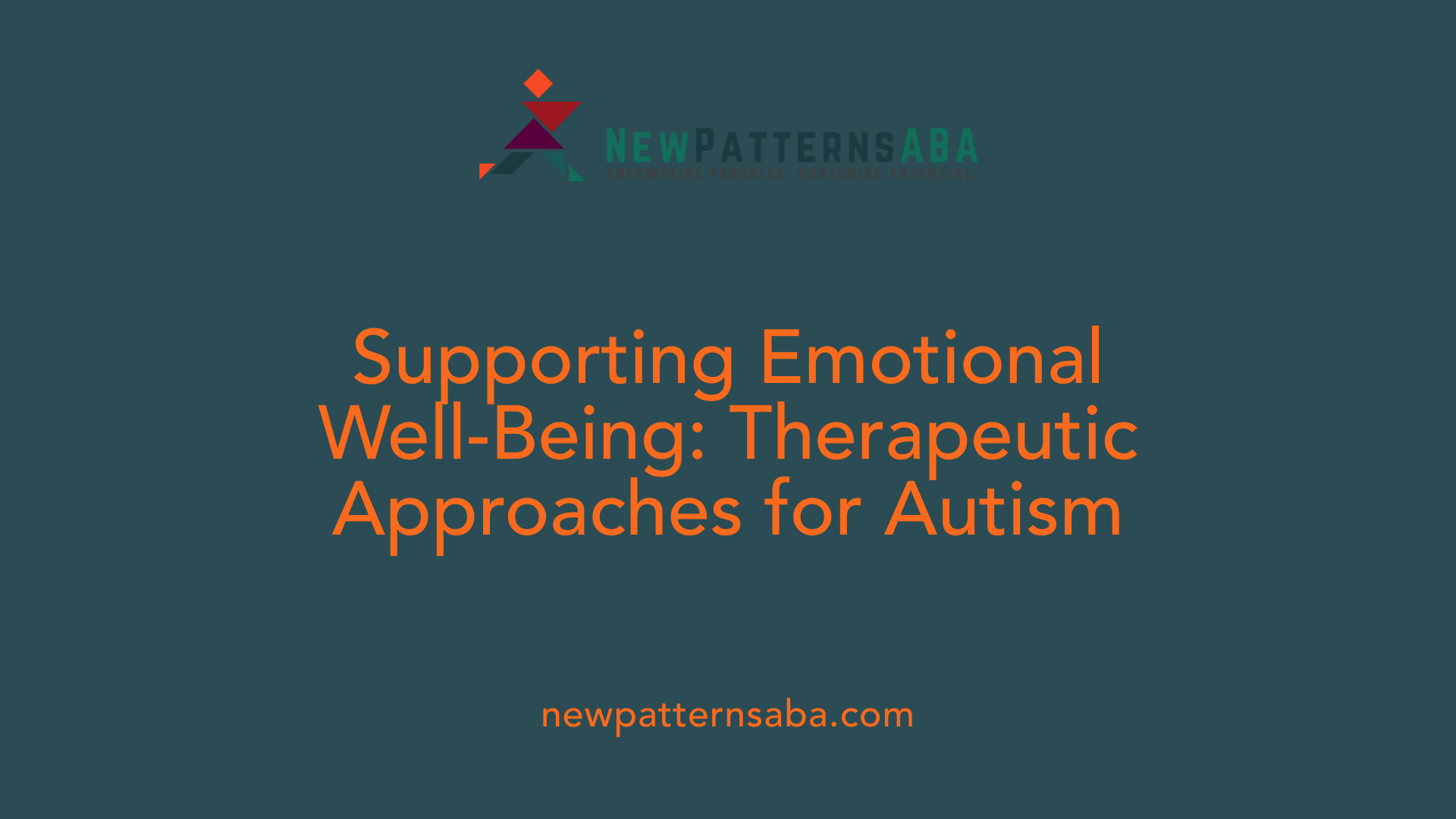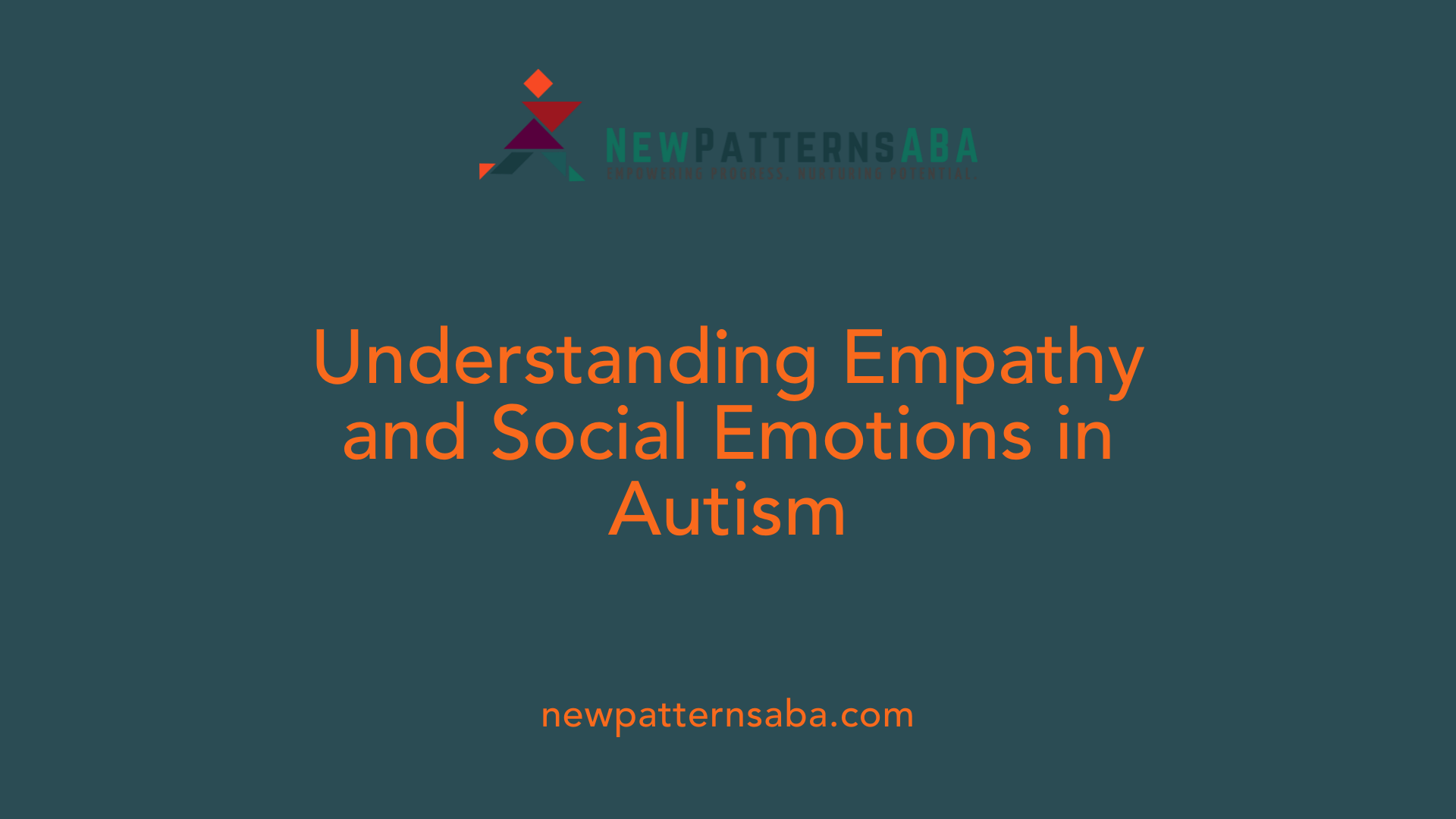Understanding the Unique Emotional World of Autistic Individuals
Autism spectrum disorder (ASD) profoundly influences how individuals process, perceive, and express emotions. This article explores the intricate relationship between autism and emotions, examining sensory processing differences, emotional regulation challenges, and innovative therapeutic approaches. By understanding these dynamics, caregivers, educators, and clinicians can foster more supportive environments that enhance emotional well-being and social competence in autistic individuals.
How Autism Shapes Emotional Processing and Experiences
How does autism affect emotional processing and experiences?
Autism influences the way individuals process and experience emotions through a combination of sensory and neural differences. Sensory processing variations, such as heightened sensitivities or reduced responsiveness, significantly affect emotional reactions, causing some autistic people to feel overwhelmed or underreact to stimuli.
Key sensory systems involved include interoception (perception of internal bodily signals), nociception (pain perception), and proprioception (sense of body position). Challenges in these systems can lead to difficulties recognizing internal cues that inform emotional states, which can complicate emotional awareness and regulation.
Many autistic individuals experience slower or delayed emotional responses. It can take hours or days for them to understand what they are feeling, often resulting in emotional overload or burnout. This delayed processing can make managing emotions more difficult and increase the risk of emotional distress.
A significant proportion of autistic people also experience alexithymia, a condition characterized by difficulty identifying, describing, and understanding their emotions. Research indicates that about 50% of autistic individuals are affected by alexithymia, a rate much higher than the 5% prevalence in neurotypical populations.
In addition, sensory and emotional differences often lead to atypical social behaviors, such as limited facial expressions or unconventional ways of showing affection. Sensory sensitivities, especially tactile sensitivities, can make social interactions that involve physical contact uncomfortable or overwhelming.
Overall, these differences demonstrate that autism affects emotional processing not by lacking feelings but through unique sensory and neural pathways that influence how emotions are experienced, recognized, and expressed.
What does current scientific research reveal about the connection between autism and emotions?
Research into autism and emotions reveals complex neurological and psychological patterns shaping emotional understanding and behavior. Studies utilizing brain imaging show atypical activity and connectivity in brain regions involved in emotion processing, such as the amygdala and prefrontal cortex.
Individuals with autism often show impairments in affect recognition tasks, especially involving facial expressions, tone of voice, and body language. These challenges are sometimes linked to differences in the functioning of the mirror neuron system (MNS), which is thought to play a role in empathy and imitation.
Sensory sensitivities prevalent in autism, such as hypersensitivity to sounds, lights, and textures, can exacerbate feelings of anxiety and frustration, further impairing emotional regulation.
Interestingly, some research suggests that emotional recognition difficulties are not universal for all autistic individuals but are often more pronounced in those with co-occurring traits like alexithymia. This indicates a nuanced relationship where emotional challenges stem partly from sensory and neural differences, and partly from coexisting emotional awareness conditions.
In conclusion, current scientific findings underscore that autism influences emotional processes primarily through altered sensory experiences and brain connectivity, which impact how emotions are perceived, understood, and regulated. These insights emphasize the importance of tailored supports and interventions that consider the neurodiverse ways in which autistic people experience feelings.
The Intricate Relationship Between Emotions and Sensory Sensitivities in Autism

What is the role of sensory sensitivities in emotional processing in autism?
Sensory sensitivities in autism are central to how individuals perceive and react to their environment, heavily influencing their emotional experiences. Many autistic people exhibit hypersensitivities—meaning they react intensely to sensory inputs such as sounds, lights, textures, or smells. For example, a loud noise might trigger feelings of anxiety or panic, contributing to emotional overload.
Conversely, hyposensitivities involve underreactivity to sensory input, which can lead to sensory-seeking behaviors such as touching or banging objects, often driven by a need to stimulate diminished sensory signals. Both extremes impact emotional regulation by either intensifying stress or prompting behaviors meant to self-soothe.
Dysfunctions in sensory systems—especially tactile, vestibular, and proprioceptive processing—play a crucial role in this dynamic. These sensory processing differences create a feedback loop, where sensory overload or under-stimulation leads to emotional reactions, which can escalate into challenging behaviors or emotional shutdowns. Therefore, sensory sensitivities do not exist independently but are deeply intertwined with emotional functioning, shaping how autistic individuals experience their world and manage their feelings.
How do sensory sensitivities influence emotional responses and regulation?
Sensory sensitivities substantially affect emotional responses and the ability to regulate emotions. When hypersensitive, individuals often experience sudden and intense emotional reactions such as irritability, anxiety, or anger, in response to sensory triggers like bright lights or loud sounds. These reactions may escalate if the stimuli persist, causing emotional outbursts or shutdowns.
In cases of hyposensitivity, the lack of adequate sensory input can lead to sensory-seeking behaviors—like spinning, touching objects repeatedly, or pacing—that are also emotionally charged due to their compulsive nature. Such behaviors can be attempts to restore sensory balance but may also carry emotional consequences such as frustration or feeling overwhelmed.
Managing these sensitivities is essential for emotional stability. Interventions like sensory integration therapy aim to help individuals modulate sensory input, thereby reducing emotional reactivity. Environment adjustments—such as creating quiet spaces or providing sensory tools—enable better sensory regulation, fostering resilience and reducing the frequency and severity of emotional meltdowns.
By recognizing and addressing sensory sensitivities, caregivers and therapists can help autistic individuals develop effective strategies to manage their emotional responses, resulting in improved overall emotional health and a better quality of life.
Alexithymia in Autism: A Barrier to Emotional Awareness and Regulation

What is the prevalence of alexithymia in autistic individuals?
Approximately 40-50% of autistic people also meet the criteria for alexithymia, making it significantly more common compared to the general population where only about 5%. This condition involves difficulties in recognizing, understanding, and describing one's own emotions. Many autistic individuals find it challenging to identify internal emotional states or connect feelings to specific bodily sensations. This prevalence underscores how common alexithymia is among autistic populations, impacting their emotional lives profoundly.
How does alexithymia affect emotional recognition and expression?
Autistic individuals with alexithymia often struggle with recognizing and interpreting their own emotions and the emotions of others. They have trouble pinpointing what they are feeling at a given moment, which can hinder effective communication and social interactions. For instance, they might find it hard to articulate feelings like sadness or frustration or mistake different emotional states, such as perceiving all negative feelings as anger.
This lack of emotional clarity can lead to social misunderstandings and feelings of isolation. It also impacts their ability to respond appropriately in social settings, further complicating relationships. The challenge in recognizing facial expressions, tone of voice, and body language is common, though some autistic individuals may still be highly attuned to external sensory stimuli.
What is the relationship between alexithymia, anxiety, and mood disorders?
Research shows that alexithymia is associated with increased levels of anxiety and depression among autistic people. When individuals cannot identify or describe their feelings, it becomes difficult to regulate emotional responses, leading to emotional overload. This overload can manifest as heightened anxiety, irritability, or mood swings.
Furthermore, alexithymia makes it harder to sense physical symptoms of anxiety, such as rapid heartbeat or tense muscles, which can make the experience more confusing and unpredictable. As a result, individuals may feel caught in a cycle of escalating emotional distress. High levels of alexithymic traits tend to correlate with more severe symptoms of mood disorders, adding to their mental health complexity.
What therapeutic strategies are effective in addressing alexithymia?
Addressing alexithymia in autistic individuals involves multiple approaches. Interoceptive training, which focuses on increasing awareness of internal bodily signals, is a practical method. Mindfulness practices help individuals become more present and aware of their physiological states, easing the process of identifying emotions.
Cognitive Behavioral Therapy (CBT) and Dialectical Behavioral Therapy (DBT) are also employed successfully. These therapies teach individuals to recognize emotional cues, reframe negative thought patterns, and develop emotion regulation skills. Techniques such as emotional labeling, use of visual emotion charts, and social stories can help improve emotional literacy.
Specialized tools, like the 5 Point Scale and Zones of Regulation, assist individuals in understanding the intensity of their feelings and choosing appropriate coping strategies. Interventions often aim to create a safe environment for exploring emotions, reduce emotional confusion, and build communication competence. When tailored to individual needs, these interventions can significantly enhance emotional awareness and reduce associated mental health challenges.
Strategies to Improve Emotional Regulation in Autism

How is emotional regulation affected in autistic individuals, and what strategies can help?
Autistic individuals often face challenges with emotional regulation, which can make it difficult to manage feelings like stress, anger, or anxiety. These difficulties may lead to behaviors such as meltdowns, tantrums, self-injury, or social withdrawal. Several factors contribute to these issues, including sensory sensitivities, difficulties recognizing and understanding emotions, and differences in brain functioning related to emotion processing.
Research indicates that hyperarousal of the nervous system and abnormalities in brain regions like the prefrontal cortex and amygdala play significant roles. Because of these neurobiological differences, autistic people may experience intense emotional reactions and struggle to return to calmness after emotional upset.
Implementing strategies that promote emotional regulation is crucial. Teaching individuals to recognize and label their emotions is a foundational step. Visual supports such as the 5 Point Scale or Zones of Regulation help individuals understand the intensity of their feelings and work towards calming down.
Mindfulness practices and relaxation exercises are also effective tools. Techniques like 'Cookie Breathing' (slow, deep breaths) and 'Rainbow Breathing' (visualizing colors while breathing) can assist in calming the nervous system.
Creating calming spaces and environments tailored to sensory needs can prevent overstimulation and reduce the likelihood of emotional outbursts. These environments may include sensory-friendly rooms, quiet corners, or areas equipped with sensory toys.
Supportive environments foster understanding and patience. Caregivers, teachers, and therapists can model calm behavior, reinforce coping and regulation skills, and provide consistent routines.
Support from professionals such as psychologists and occupational therapists is vital. They can tailor interventions to individual needs, combining strategies like cognitive-behavioral therapy (CBT), sensory integration therapy, and mindfulness training.
In summary, improving emotional regulation in autistic individuals involves a combination of teaching emotional awareness, employing visual and sensory supports, practicing mindfulness, and creating nurturing environments. Consistent practice, patience, and individualization are essential in helping autistic individuals develop effective emotional management skills.
Therapeutic Interventions and Support Systems for Emotional Well-Being

What therapeutic approaches are effective in improving emotional regulation in autistic individuals?
Improving emotional regulation in autistic individuals involves a variety of tailored therapeutic strategies that focus on skill building and supportive environments. Modified cognitive-behavioral therapy (CBT) has been adapted specifically for autistic individuals to help recognize, understand, and manage emotions more effectively. For instance, interventions may include visual aids, social stories, and concrete examples to make emotional concepts clearer.
Mindfulness-based therapies, such as mindfulness meditation and breathing exercises, are also effective. These practices promote present-moment awareness and help individuals pause before reacting impulsively. Acceptance-based therapies, including Acceptance and Commitment Therapy (ACT), encourage embracing emotions without judgment, facilitating greater emotional flexibility.
Support tools like the Zones of Regulation and The Incredible Five Point Scale are commonly used to enhance emotional awareness and self-regulation. These visuals help individuals identify their emotional states, recognize triggers, and develop proactive strategies to regain calm. For example, the Zones of Regulation categorize emotions into color-coded zones (e.g., blue for sad, red for angry), making it easier for users to communicate their feelings.
Additionally, techniques like deep breathing, sensory tools (stress balls, textured toys), and the creation of calming environments support emotional regulation efforts. Such tools can soothe heightened arousal and provide tangible ways to self-soothe.
Building interoceptive awareness—the understanding of internal bodily signals—is another critical component. Interoception training helps individuals identify early physical signs of emotional states, like a racing heart or tense muscles, which can prevent escalation.
Fostering social understanding through modeling, role-playing, and social skills training helps individuals interpret and respond to others' emotions more appropriately. These approaches contribute to better social interactions and emotional comprehension.
While these strategies are promising, ongoing research is necessary to determine their long-term efficacy. Combining multiple interventions, personalized to the individual's needs and contexts, appears to offer the most benefit.
| Approach | Description | Example Tools/Techniques | Goal |
|---|---|---|---|
| Modified CBT | Tailored cognitive-behavioral strategies | Visual supports, social stories | Recognize, label, and regulate emotions |
| Mindfulness and Acceptance | Present-moment awareness and acceptance strategies | Mindful breathing, meditation | Reduce impulsivity, increase calmness |
| Visual Support Tools | Visual aids that depict emotional states | Zones of Regulation, Five Point Scale | Enhance emotional awareness and self-regulation |
| Sensory and Calming Environments | Supportive physical spaces for regulation | Sensory toys, calming music | Reduce sensory overload and emotional escalations |
| Interoception Building | Training to recognize internal bodily signals | Body scan exercises, proprioceptive play | Improve early emotional signaling recognition |
| Social Understanding | Learning to interpret emotion in others | Role-playing, modeling | Foster empathy and appropriate social responses |
In summary, effective emotional regulation strategies in autism combine neurophysiological understanding with practical tools. Strategies like modified CBT, mindfulness practices, visual supports, sensory tools, and social skills training are integrated into holistic support systems. Caregiver involvement and environmental adaptations further enhance the benefits of therapy, helping individuals navigate emotional challenges more successfully.
Empathy, Social Contagion, and Emotional Reciprocity in Autism

How do autistic individuals experience empathy and social contagion?
Autistic individuals often experience empathy in ways that can be quite different from those of neurotypical people. While many have the capacity for emotional empathy—feeling others' emotions deeply—they might find it challenging to interpret social cues, such as facial expressions, tone of voice, and body language. This difficulty can make it seem like they lack empathy, but in reality, their empathic response may be intense or effortful.
A common phenomenon in autism is empathy over-arousal, where the individual feels overwhelmed by others' negative emotions such as sadness, anxiety, or anger. They might become 'infected' by these emotions, leading to emotional overload, social withdrawal, or feelings of distress. Such heightened sensitivity can contribute to social difficulties and even avoidance of emotionally charged interactions.
Social contagion, the process whereby emotions spread from person to person, often affects autistic individuals who are more sensitive to others' emotional states. This sensitivity means they can pick up on and mirror others' feelings, sometimes amplifying these feelings themselves. This process is not a sign of lack of empathy but of an increased emotional reactivity, which can be both an advantage and a challenge.
Variations in empathic ability are influenced by several factors. The presence of alexithymia—a condition where people struggle to identify and describe their own emotions—can complicate empathic responses. Gender differences and individual personality traits also play roles in how empathy manifests in autistic people.
Importantly, autistic individuals do not lack empathy; rather, they experience it differently. Some may find unconditional empathy effortful, especially when overwhelmed by emotional stimuli. Others might display empathic responses that are highly intense but conditional upon specific contexts or their comfort level.
Understanding these nuanced experiences is essential for supporting autistic people's social development. Recognizing that empathy can be both a social strength and a source of difficulty helps in creating supportive environments that foster meaningful connections.
Variations in empathic ability
| Factor | Impact on Empathy | Explanation |
|---|---|---|
| Emotional empathy | Present but variable | Can be intense when triggered but may be hard to interpret cues for others' feelings |
| Cognitive empathy | Often impaired | Difficulties understanding others' perspectives due to challenges with theory of mind |
| Empathy over-arousal | Common | Overwhelming feelings prompted by others' distress, leading to withdrawal |
| Empathic disequilibrium | Individual difference | Some may experience stronger emotional responses than cognitive understanding |
| Alexithymia | Significant | Difficulty recognizing and describing personal emotions affects empathy accuracy |
| Gender and personality | Variable | Influences how empathy manifests and is expressed |
Implications for social interactions and mutual understanding
Understanding that empathy in autism is often characterized by heightened or effortful responses rather than absence can improve social support strategies. For instance, providing cues that help regulate emotional overload or teaching self-soothing techniques can foster better interactions.
Addressing social contagion involves creating environments where autistic individuals can engage at their own pace, using clear communication and consistent routines. Equally, promoting awareness among neurotypical peers about the emotional sensitivities of autistic individuals can reduce misunderstandings.
By acknowledging the diverse ways in which empathy manifests, caregivers, teachers, and peers can develop more tailored approaches for interaction. These include visual supports, social stories, and emotion regulation tools to build mutual understanding.
In sum, empathy in autism encompasses a broad spectrum—from intense emotional resonance to challenges with emotional recognition. Recognizing and harnessing these differences can lead to more inclusive and compassionate social environments.
Fostering Emotional Understanding and Support in Autism
Recognizing the unique emotional experiences of autistic individuals is vital for fostering acceptance, understanding, and effective support. By employing targeted interventions—ranging from sensory regulation and emotional recognition tools to therapeutic approaches like CBT and mindfulness—we can help autistic people manage their emotions more effectively. Emphasizing their strengths, addressing sensory sensitivities, and promoting social-emotional learning are key steps toward enhancing well-being and social integration. Supporting neurodiversity in emotional experience not only benefits autistic individuals but also enriches our collective understanding of human emotion.
References
- Autism and Emotions: How and Why Do Autistic People Process ...
- Alexithymia | Autistica
- Autism, Meltdowns, and the Struggle to Manage Emotions
- Expert Q&A: Understanding autism emotional regulation
- Autism, Emotion Recognition and the Mirror Neuron System
- Managing Emotions: Affection and Autism - Attwood & Garnett Events
- Alexithymia & Autism: When you don't know what emotion(s) you are ...
- [PDF] Emotional Regulation Strategies





